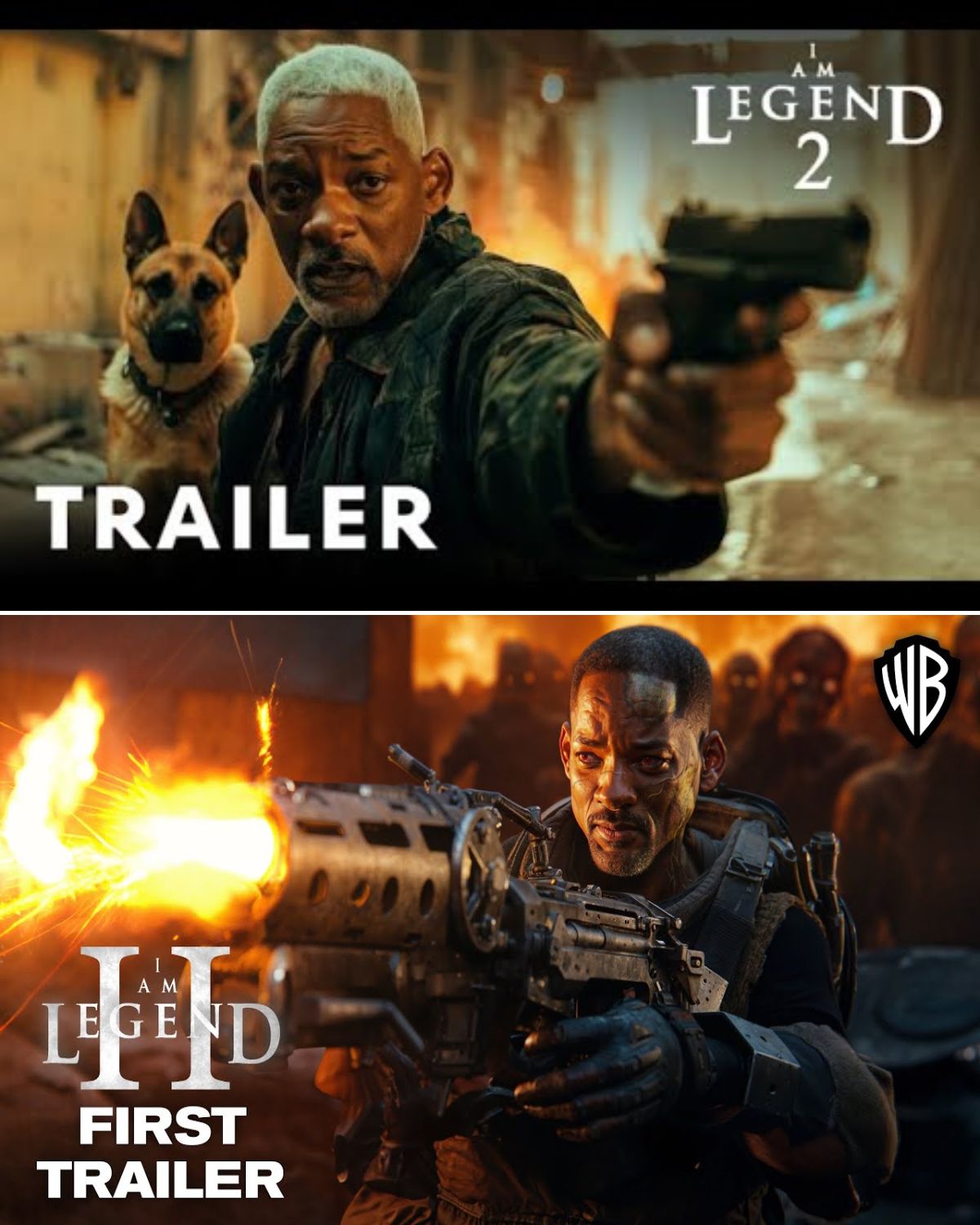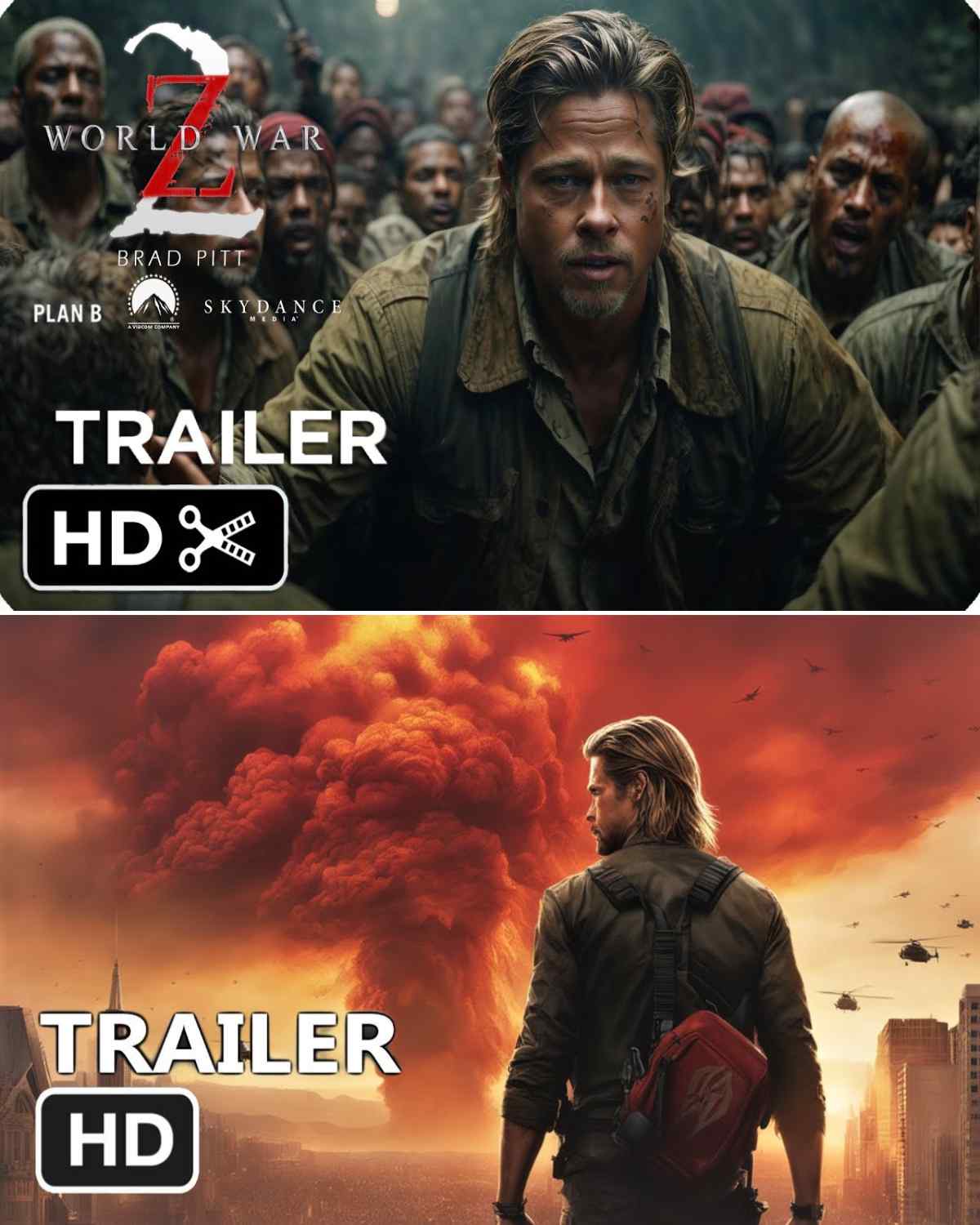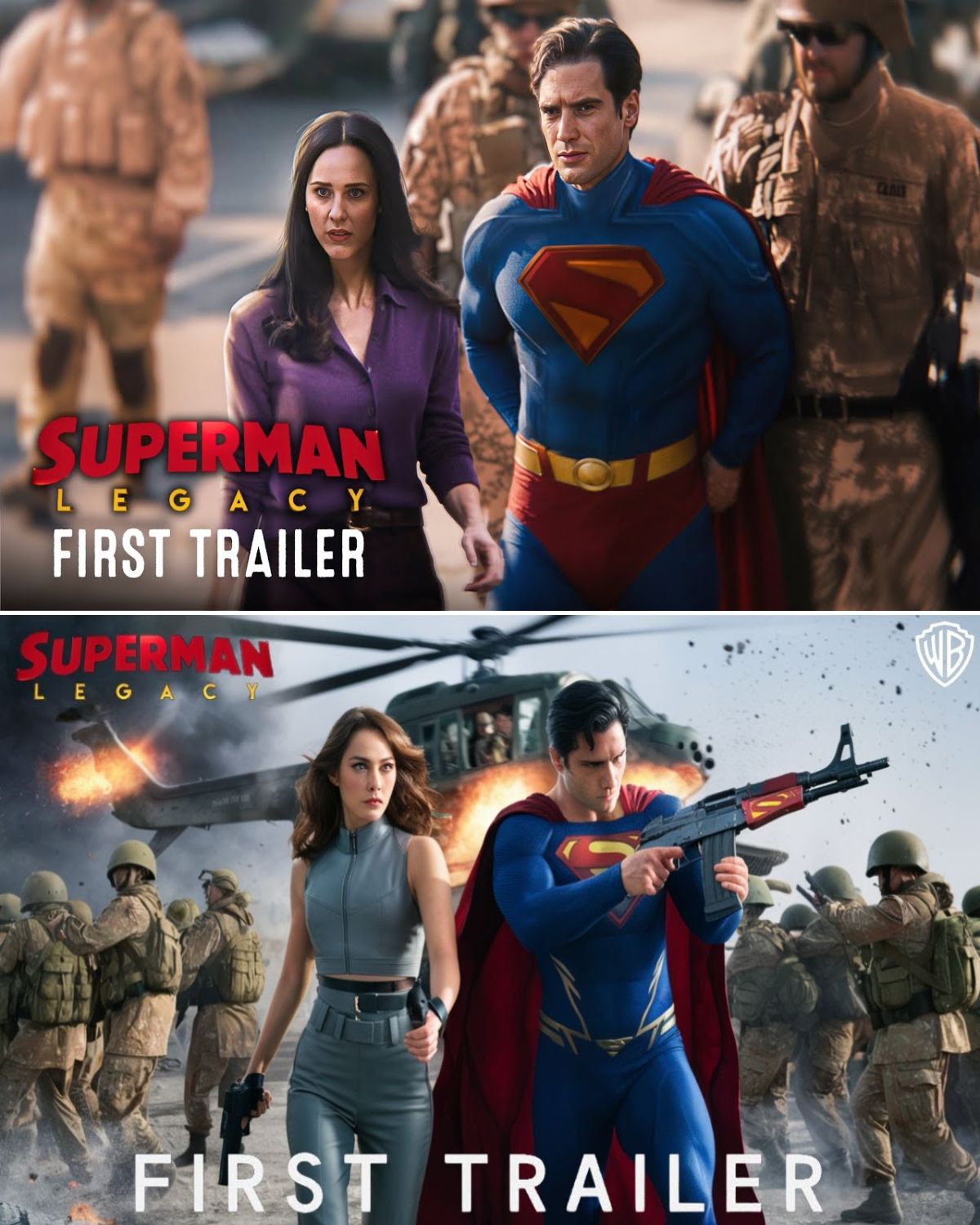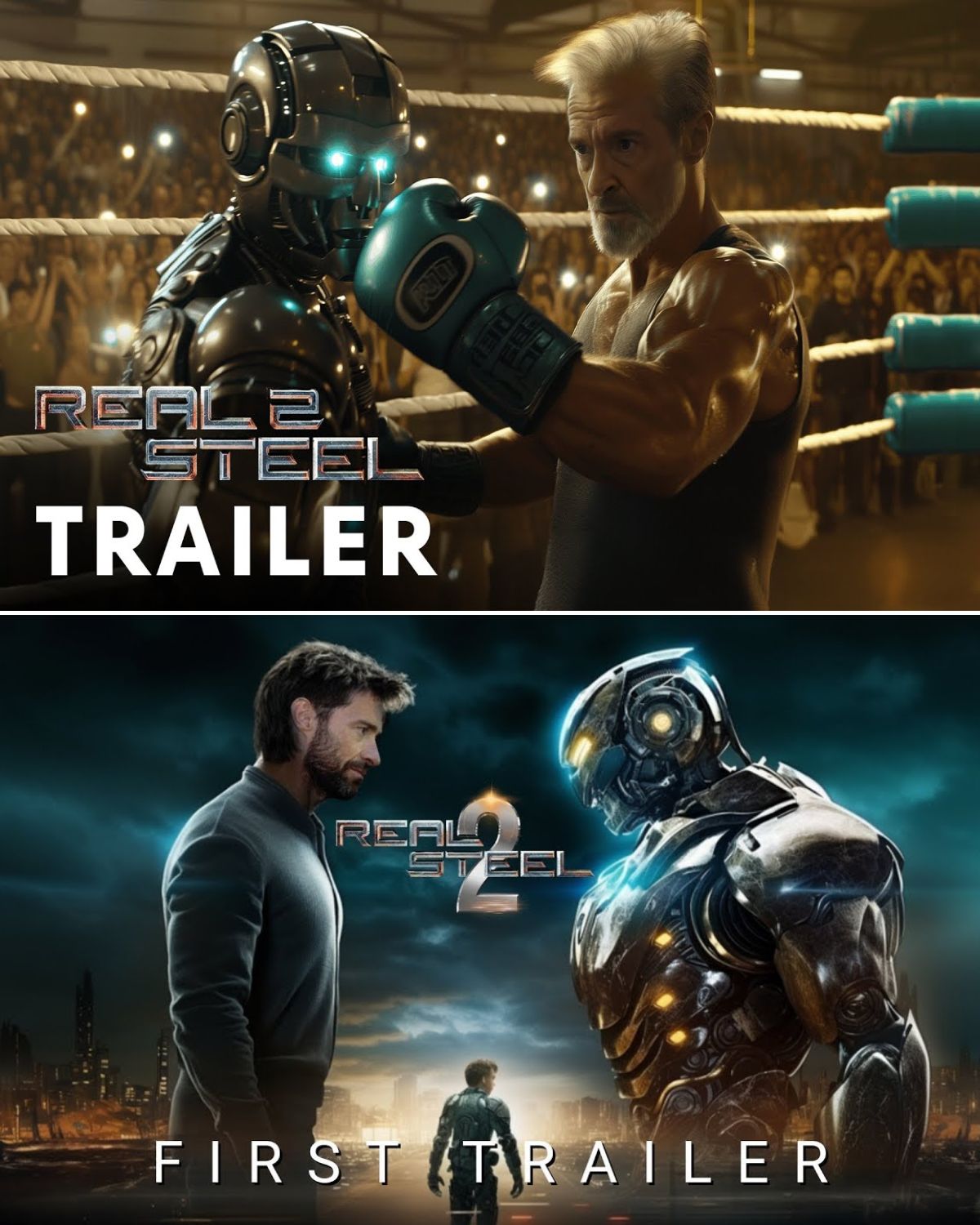How did you and ILM get involved on this show?ILM has a long history of working on Marvel movies. CAPTAIN MARVEL had been on the radar for a while as a show that we wanted to be involved with and we were fortunate enough to get offered an exciting chunk of the work. And once BLACK PANTHER was over this seemed like a great next opportunity and challenge for me.
How was the collaboration with directors Anna Boden, Ryan Fleck and VFX Supervisor Christopher Townsend?Chris is an ex-ILM artist. We knew each other well from those days so the relationship was quite easy and very productively collaborative. With so many shots in the film and so many facilities to wrangle he really had to aggressively manage his time. To that end, other than some creative conversations on set with the directors, all of our interactions were directly with Chris. We would cineSync several times a week through a majority of the project, and then daily at the very end.
How did you organize the work with your VFX Producer?It was decided early on that we would follow a very successful BLACK PANTHER strategy of having a majority of the work done through our Vancouver facility. I spent most of the first 3 months there supervising and then returned to San Francisco once more of that crew joined.
Can you explain in detail about the creation of Captain Marvel especially when she is glowing?The Captain Marvel shots are a combination of all CG shots, CG shots with projected facial performances, and practical shots where we augmented her suit/skin/hair and put the binary energy over and around her. Generally, flying shots in the distance are all CG. The closeup flying shots are CG but with a facial mesh driven by a performance by Brie captured in a 3-camera array and solved to get a moving mesh that we could then re-project the footage on to, and add additional interactive and relighting passes to. And the more hero non-flying shots are Brie’s real performance closely match-animated so that we could either replace her suit and hair with CG or in some cases just add interactive lighting passes onto her plate suit and hair.
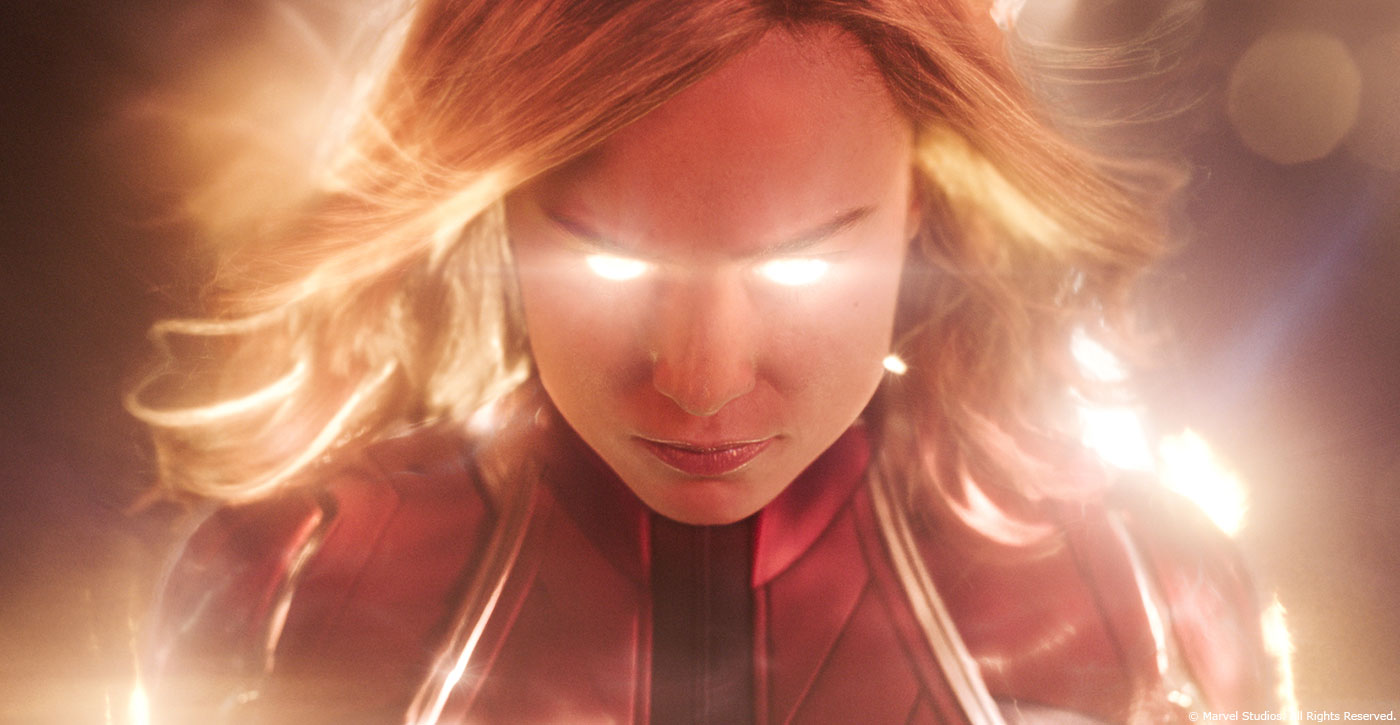
Can you tell us more about her rigging and animation?Adrian Millington Animation Supervisor // For Captain Marvel we took a fairly traditional approach to her character rig, choosing to go with a more standard bipedal setup as she would be used for a lot of digital double work. In regards to animation, we tried to use motion capture where possible to maintain realism in her performances. Other more dynamic situations required a lot of reference footage to be used to make sure our body mechanics were grounded in reality.
How did you create the various shaders and textures?Steve Walton Texture Supervisor, David Meny Lead Digital Artist, John Walker Lead Lookdev Artist // We started the lookdev for Captain Marvel by meticulously combing through the various polarized photographic references provided by the client. We selected some hero photography, which we could use as both source textures and as reference to match. The client also sent us parts of the costume so we could see it and its material qualities in person. Another tool used was a NIX color scanner to get a solid match of the colors. Then area maps were painted to add extra wear and specular detail to the costume. As always, a little extra dirt, smudges, and wear adds a lot of realism to digital assets.
Captain Marvel was lit and the shading network was built in Katana. Rendering was done with Renderman RIS.
For the skin shading, we used a proprietary skin shader that divides the face up into seven major regions and 57 minor regions. The specularity and subsurface scattering can be controlled individually in each region for a precise match to the photographic reference.
How did you handle the challenge of her hairs?Rayn Gillis Lead Groomer, Malcolm Thomas-Gustavee Creature Supervisor // The hair was an interesting challenge because the shot work required multiple looks, including zero gravity, atmospheric re-entry, binary energy, and long hair to mohawk transitions, but needed to still feel connected and true to Captain Marvel. We all spent time watching as much real world reference as we could from sources like the International Space Station, skydiving, and scuba diving. When it became time to experiment, our groom and simulation artists worked together to develop the new looks that could handle the heavy differences so that by the end each version was its own unique setup to get the most out of that shot.
Getting the hair to look right in its different incarnations throughout the film was a team effort between three departments: groom, modeling, and creature dev. Groom built the initial look of the hair, and then created a shape that could be activated in-shot that would manipulate her default groom into a form that more resembled her hair in the binary look. Modeling then used a dense subset of guides to sculpt the final hair into different poses, if necessary. Crdev then took the posed hair and applied custom sims for each shot to create the motion of flying, binary energy, anti-gravity, as well as transforming between her full head of hair and mohawk.
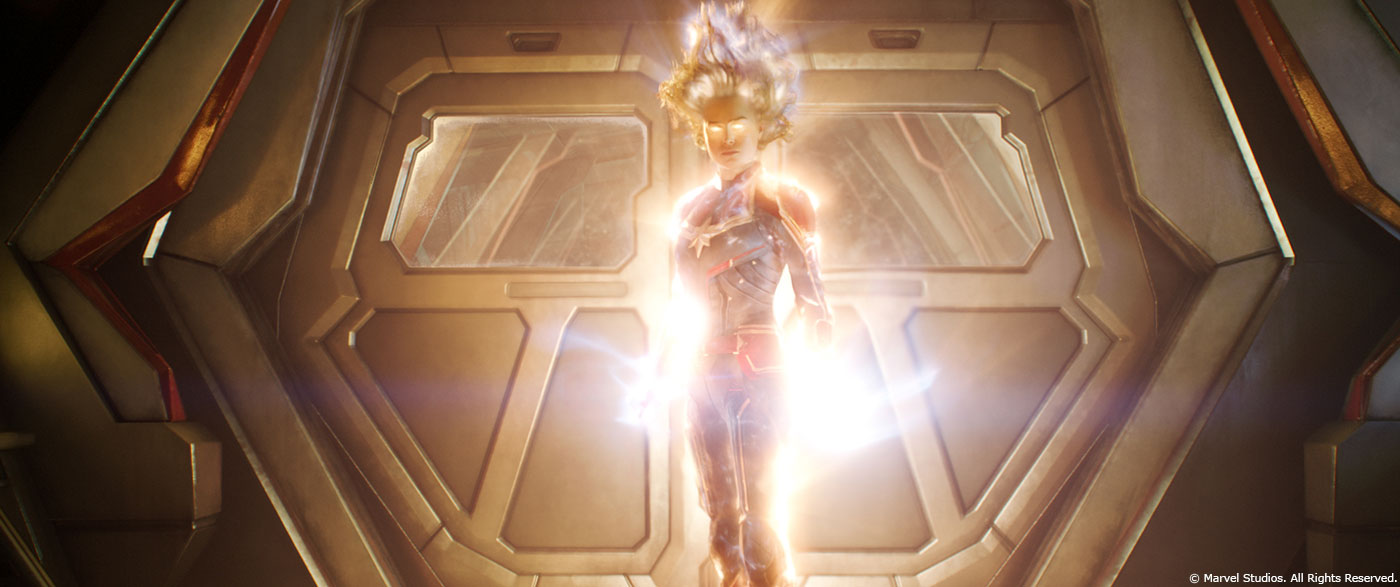
Did you receive specific indications and reference for her animation?Adrian Millington Animation Supervisor // We needed a specific look for Captain Marvel so for this we went back to the comic books, searching for signature and iconic poses particular to her character in different situations. We felt it was important to make sure there was no confusion with any other super hero and that we were true to what had already been established.
How did you manage the challenge of her animation flying in space?Adrian Millington Animation Supervisor // Flying in space can be a tricky thing to achieve, aesthetically, due to weightlessness. Generally, we have an expectation that body movements would be somewhat slower in space, but since Captain Marvel is powered by energy, this gave us reason to be a little more dynamic and energetic, yet still graceful.
How did you create the beautiful FX of her energy?Raul Essig FX Supervisor // Her glowing effects have a lot going on underneath all the lens flaring. In the simplest cases when she glows from head to toe, there were no less than twelve layers of effects on her. The hair alone could have anywhere from four to eight layers.
One of the more visually dominant layers is a simulation of energy flying off of her in thin, wispy arcs. This was simulated by creating something similar to an electrical field around her body, and emitting charged particles in patches on her body. These charges are then repulsed by the electric field and fly away from her body, creating arcs of energy shooting in all directions.
We ran another set of simulations for energy flowing down her like bolts of electricity.
There are also layers ranging down to the very subtle. One layer is like a liquid wash of energy that flows over her skin. Another is just for adding a visual breakup to the edge of her silhouette.
This is a type of effect that needed to be able to work at very different power levels, so we could combine our more dramatic and more subtle elements together, mixing them in different ways to achieve the look the shots needed.
For a few shots we needed to seriously amplify her effects to make the shot work and we needed something more than the glowing that was already there. We continued with the thought of this being an electromagnetic effect, and simulated a magnetic field surrounding her, as if she was a human-shaped bar magnet, and rendered the resulting virtual magnetic field lines.
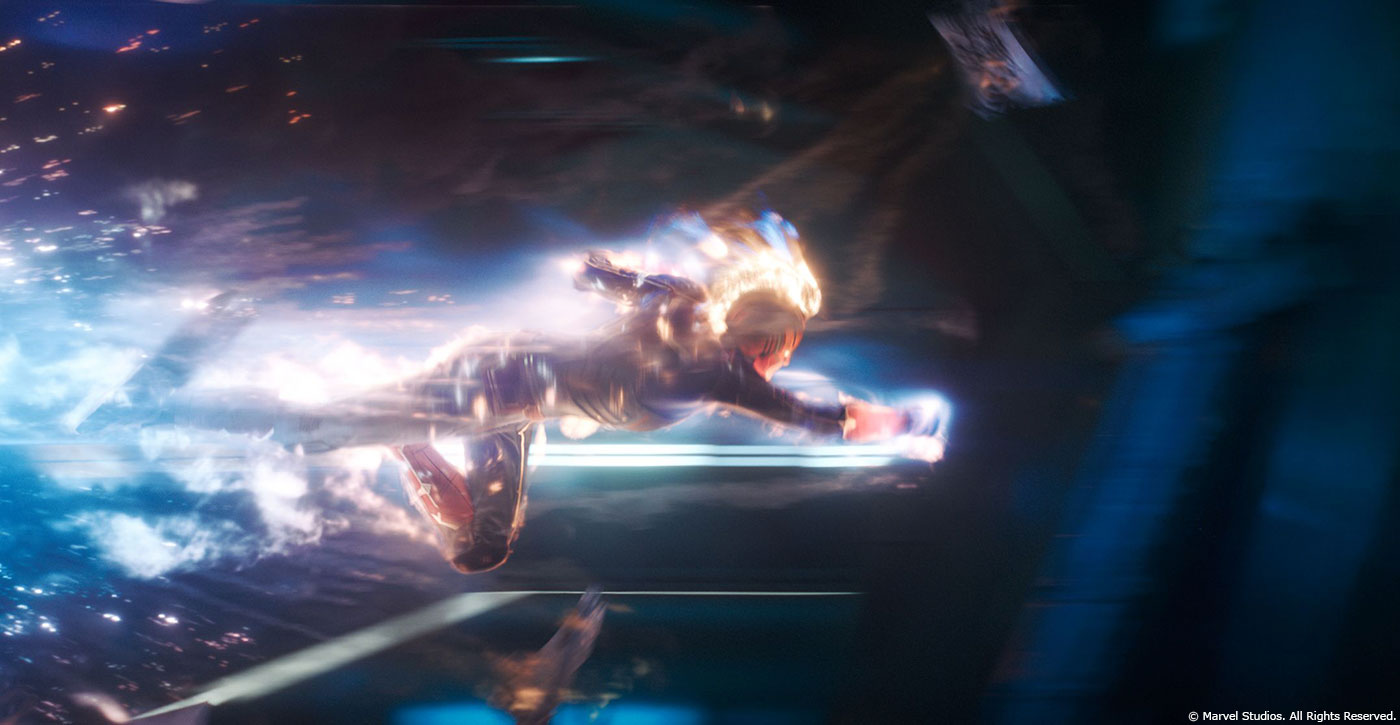
Can you explain in detail about the creation and animation of the Supreme Intelligence interface?Michael Wang FX Supervisor // The Supreme Intelligence Interface is one of the most challenging FX we worked on for Captain Marvel. The concept is a combination of ferro-fluid, general liquid, and some bio-luminescent creatures, which are mainly there to create the organic, fluid and intelligent look of Supreme Intelligence. The overall structure of the FX includes fluid base, fluid strands, and interior lights.
The fluid base is designed as the source of Supreme Intelligence. It is implemented with some procedural animation based on some ferro-fluid references. Some secondary motion is added to achieve the organic motion. There’s also some controls for the directionality of the spikes, which shows the fluid is moving towards her with its own power and intelligence.
The strands are the most important part of the FX since they show how Supreme Intelligence can hold and control Captain Marvel. The visual complexity required some more advanced setup for fast turnaround and visualization purposes. Most strands are created with the tools developed for the FX, and there are also some shots that were done manually for more flexibility and artistic freedom. The growth of the strands were implemented with some procedural animation, and with some secondary refinement. Some high-resolution meshes were generated to achieve the detailed look.
An additional layer of « interior light » passes were introduced to achieve the « energy flow » feel for the FX. Several sets of masks and particles were generated to help build some interesting patterns of energy flow, and this is the main layer for really fine details on top of the strand structure.
The whole Supreme Intelligence is rendered through Renderman in Katana for the best lighting integration, and multiple passes were generated for compositing flexibility.
Can you explain in detail about the creation of the Ronan ships?Steve Walton Texture Supervisor // Looking at the overall design of the ship and at the design language of the Kree in general, I thought it would be interesting to explore minerals as the base material concept. The ships and missiles had strong monolithic/slab designs, so I was thinking about large stone structures and how that idea would work for an alien ship. A few years ago one of our painters, Jean Bolte, had the opportunity to visit and photograph a massive mineral collection from a local collector. Those photos were a great source of inspiration. We chose slate for the majority of the large slab wings accented with gold/pyrite details in the recesses. Then, for Ronin’s ship, we used meteoric iron as the pattern and made the color ‘Kree teal’. Ronin’s ship needed to have a unique shape as well so we added a larger central bridge area and twisted the wings as a subtle reference to his ship in GUARDIANS OF THE GALAXY.
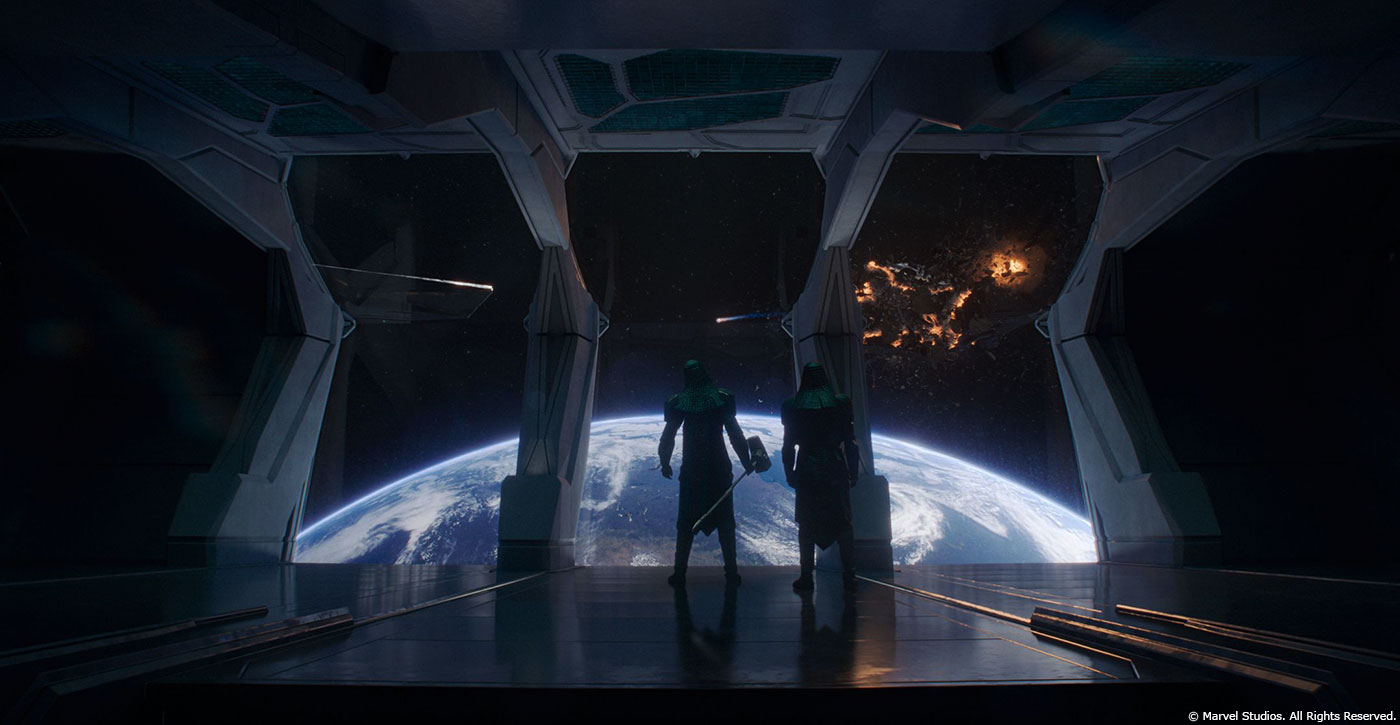
How did you manage the destruction of Kree ships?Malcolm Thomas-Gustavee Creature Supervisor // For the destruction, our biggest concern was always balancing how powerful Captain Marvel is with showing the proper scale and complexity of what she’s destroying. If it looked too easy and the ships too flimsy then its not impressive, but if nothing happens then it’s boring. We ended up finding our best results by treating her attacks as something that destroyed the internal working of whatever she hit and then they would subsequently explode. It’s subtle in some shots, but that’s the logic behind her flying through the Accuser like a hot knife through butter and still demolishing it.
Goose is a really special cat. Can you explain in detail about his creation and his tentacles?We were approached to tackle the Flerken shots of Goose. Trixter had built the initial cat asset and done a great job of matching Reggie, one of the on set cats. Once we got our version of the asset matching the reference of Reggie and the Trixter asset, we started designing the Flerken. There was some initial post viz that gave us the flavor of the action and motion desired, but without a final look. Chris pointed us to some imagery from the original comics as inspiration and we started collecting obscure, real-world animal imagery to try and anchor the fleshy look and textures in something real, or a combination of some real things. We did several rounds of concept art while the rigging and animation teams began building the elaborate tentacle rigs that would be needed. We went through some pretty wacky looks and then Anna and Ryan seemed to land on the one we ended up with. It’s a tapered tentacle with a hard shelled outer half with spikey ridges, and an inner area covered with very small suction cups. The suction cup placement needed to deform and have a consistent placement as the underlying tentacle deformed so we chose to do that as an fx task to instance a single suction cup model across each tentacle. Procedurally driven wet areas were shader controlled and an additional fx task of generating stringy saliva to sling around rounded out the look. It had some tricky constraints to hit in the shot work and had challenges that every discipline had to overcome, but in the end the shots came together quite well.
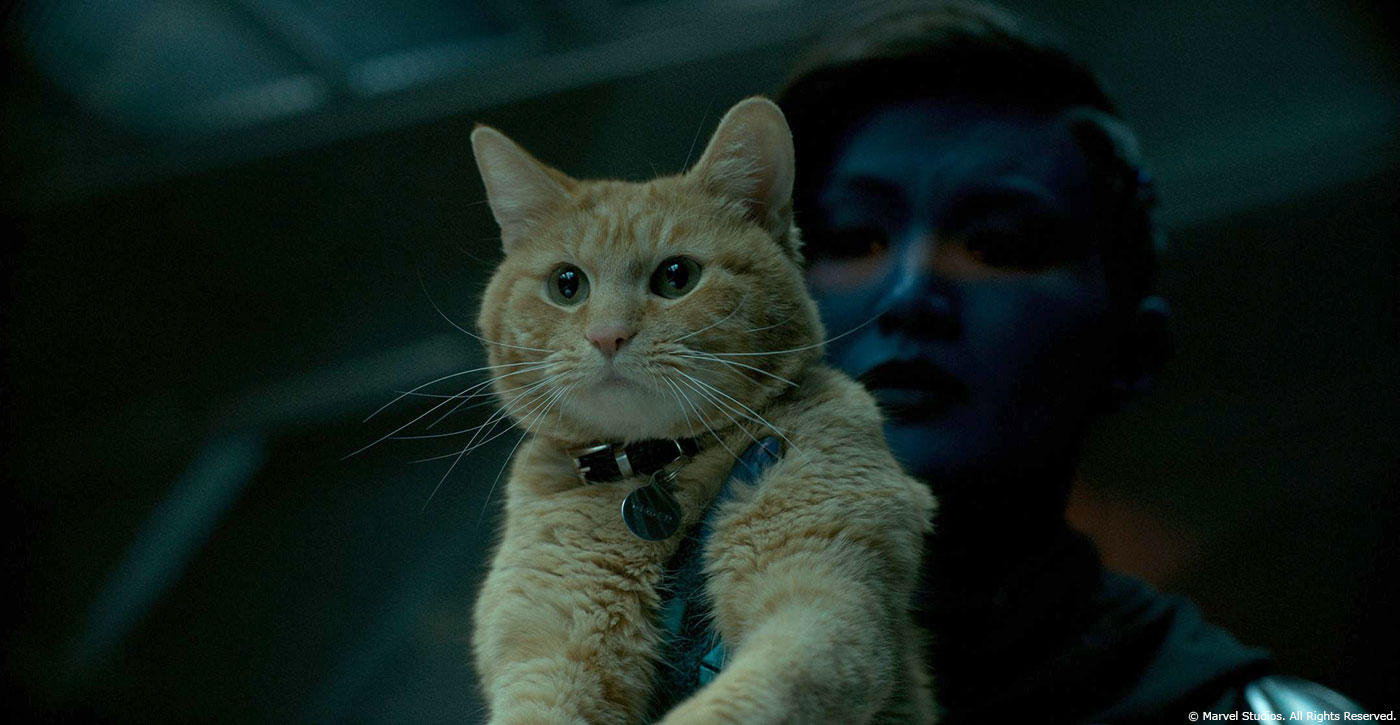
How did you handle the rigging and animation challenges for the tentacles?Adrian Millington Animation Supervisor // While the Flerken was great fun to animate, one of the big challenges we encountered was the general size of the tentacles in contrast to the cat and how to make that work. Oversized tentacles needed to burst out from the mouth of a small cat, so for this we needed to implement various scaling controls into the rig that the animators could use to assist this. During some of our initial animation tests we quickly realized that there was a fine balance between the Flerken tentacles looking disgusting and looking purposeful in their movement. We ended up making sure the tentacle performance was a little more intelligent and intent driven. We wanted them to have some strength but just the right amount of « gross » for the surprise reveal.
Which sequence or shot was the most challenging?There were so many unique challenges on this one, but I think the biggest set of shot challenges were probably the end sequence, when she flies up from earth to rendezvous and then fly off into the distance. This sequence came to us very late and with the added challenges of her flying, but not wearing her helmet, and wearing a bomber jacket over her uniform. There are so many things working against you as far as a believable shot goes that it’s hard to know where the target is. She is floating in space and needs to feel like she’s really there… but she doesn’t have a helmet and she needs to look powerful but in control, and beautiful. She needs to have her binary energy in all it’s glory all around her, but you need to be able to read the subtlety in Brie’s performance. Needless to say it was a real challenge.
Is there something specific that gives you some really short nights?I’d say it was just how the binary effects came together. Our main goal was to achieve something that looked spectacular. We did that, but then when it came time to plug it into the mass of shots we found that each shot needed a certain amount of art direction and reworking. The plug and play methodology gave us good looking shots, but she is the title character and one of the most powerful beings in the MCU, if not the most powerful, so every shot needed beauty tweaking.
What is your favorite shot or sequence?I think my favorite shot has to be the first full binary shot we finaled. We see Captain Marvel stream by in the previous shot as an incredible glow and then she turns around and the glow recedes and she powers down. We get to study the effects coursing over her and through her hair. It’s a beautiful shot and when that came together we knew we had found the iconic look.
What is your best memory on this show?At the end of a project you are always putting in very long hours and working through weekends. For me, the best moment of a show is always hearing that we have finished the last shots and that I can let the crew go home and see their families again. This one came from a phone call from Chris Townsend and Victoria Alonzo from the DI suite as they finaled the last shot.
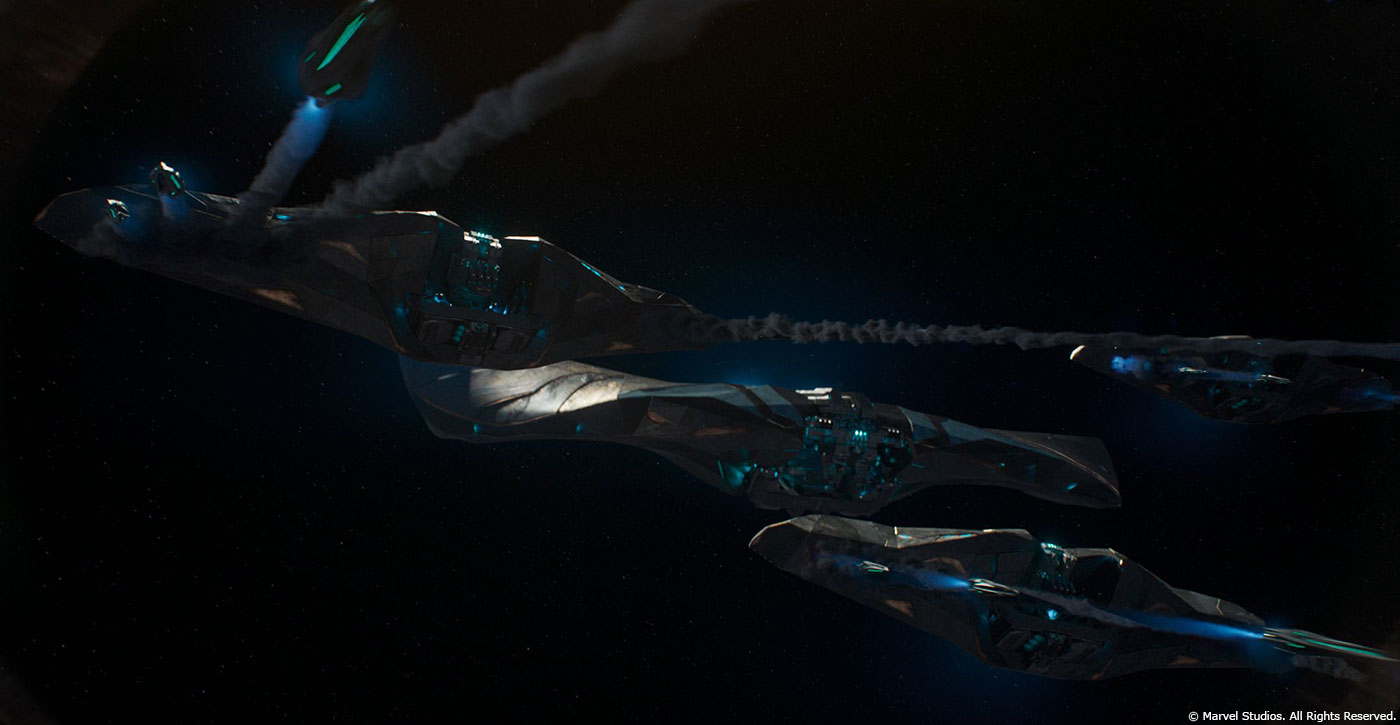
How long have you worked on this show?I was on this one for almost a year.
What’s the VFX shots count?I believe ILM’s shot count was right at 300 shots.
What is your next project?Unconfirmed at the moment what the next project is. I have ones I am hopeful about, but nothing is confirmed at the moment so the current project is recuperation.
